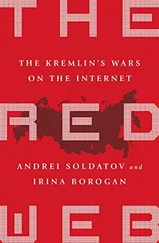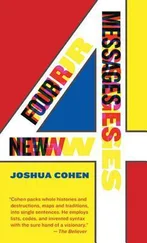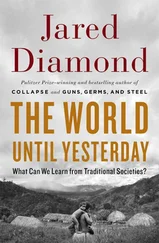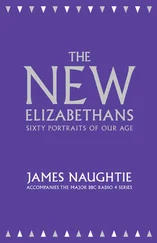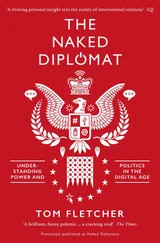Jared Cohen - The New Digital Age
Здесь есть возможность читать онлайн «Jared Cohen - The New Digital Age» весь текст электронной книги совершенно бесплатно (целиком полную версию без сокращений). В некоторых случаях можно слушать аудио, скачать через торрент в формате fb2 и присутствует краткое содержание. Жанр: Старинная литература, на английском языке. Описание произведения, (предисловие) а так же отзывы посетителей доступны на портале библиотеки ЛибКат.
- Название:The New Digital Age
- Автор:
- Жанр:
- Год:неизвестен
- ISBN:нет данных
- Рейтинг книги:5 / 5. Голосов: 1
-
Избранное:Добавить в избранное
- Отзывы:
-
Ваша оценка:
- 100
- 1
- 2
- 3
- 4
- 5
The New Digital Age: краткое содержание, описание и аннотация
Предлагаем к чтению аннотацию, описание, краткое содержание или предисловие (зависит от того, что написал сам автор книги «The New Digital Age»). Если вы не нашли необходимую информацию о книге — напишите в комментариях, мы постараемся отыскать её.
The New Digital Age — читать онлайн бесплатно полную книгу (весь текст) целиком
Ниже представлен текст книги, разбитый по страницам. Система сохранения места последней прочитанной страницы, позволяет с удобством читать онлайн бесплатно книгу «The New Digital Age», без необходимости каждый раз заново искать на чём Вы остановились. Поставьте закладку, и сможете в любой момент перейти на страницу, на которой закончили чтение.
Интервал:
Закладка:
People well qualified to say what transpired in Haiti have examined this fallout with great acumen—including Paul Farmer in his book Haiti After the Earthquake —and the consensus seems to be that this was an unfortunate confluence of factors: extensive devastation meeting bureaucratic inefficiency amid a backdrop of deeply entrenched preexisting challenges. Communication technologies could not have hoped to ameliorate all of Haiti’s woes, but there are many areas where, if correctly and widely utilized, coordinated online platforms can streamline this process so that a future version of the Haitian earthquake will produce more good results and less waste in a faster recovery period. Throughout this section we will present a few of our own ideas, knowing full well that the institutional actors in reconstruction settings—the large NGOs, the foreign government donors and all the rest—may be unwilling to take these steps for fear of failure or loss of influence in the future.
As we look ahead to the next wave of disasters and conflicts that will occur in a more connected age, we can see a pattern emerging. The mixture of more potential donors and impressive online marketing will create an “NGO bubble” within each postcrisis society, and eventually that bubble will burst, ultimately leading to a greater decentralization of aid and a rash of new experiments.
Historically, what has differentiated established aid organizations is less their impact than their brand: catchy logos, poignant advertisements and prominent endorsements go much further toward attracting public donations than detailed reports about logistics, antimalarial bed nets or incremental successes. There is perhaps no better recent example of this than the now infamous Kony 2012 video, produced by the nonprofit organization Invisible Children to generate awareness about a multi-decade-long war in northern Uganda. While the NGO’s mission to end atrocities by a Ugandan militant group, the Lord’s Resistance Army (LRA), was noble, many who were intimately familiar with the conflict—including many Ugandans—found the video misleading, simplistic and, ultimately, self-serving. Yet the video amassed more than 100 million views in under a week (making it the first viral video to do so), largely thanks to endorsements from prominent celebrities with millions of followers on Twitter. Early criticism of the NGO and its operations—like its 70 percent overhead in “production costs” (basically, salaries)—did little to stem the swelling movement, until it was abruptly ended by a very public and bizarre detention of one of the organization’s cofounders after he exposed himself in public.
As we have already said, we will see a more level playing field for marketing in the digital era. Anyone with a registered NGO or charity (and perhaps not even that) can produce a flashy online platform with high-quality content and cool mobile apps. After all, this is the fastest and easiest way for an individual or group to make its mark. The actual substance of the organization—how robust or competent it is, how it handles finances, how good its programs might or might not be—matters less. Like certain start-up revolutionaries who value style over substance, new participants will find ways to exploit the blind spots of their supporters; in this case, these groups can take advantage of the fact that donors have little real sense of what it’s like on the ground. So when a disaster strikes and NGOs pour into the space, the established ones will find themselves shoulder to shoulder with NGO start-ups, groups that have a strong online presence and starter funds but that are generally untested. Such start-ups will be more targeted in their mission than traditional aid organizations, and they’ll appear equally if not more competent than their established counterparts. They’ll attract attention but they’ll deliver less of what is needed by those they are trying to help; some might be capable but most won’t be, as they will lack the networks, the deep knowledge and the operational skills of professional organizations.
This mismatch between the start-ups’ marketing and delivery will infuriate the established players. Start-ups and institutional NGOs will compete for the same resources, and the start-ups will use their digital savvy and knowledge of different online audiences to their advantage to siphon off resources from the older organizations. They’ll depict the large institutional actors as lumbering, inefficient and out of touch, with high overheads, large staffs and impersonal qualities, promising instead to bring donors much closer to the recipients of aid by cutting out the middlemen. For new potential donors looking to contribute, this promise of directness will be a particularly attractive selling point since connectivity ensures that many of them will feel personally involved in the crisis already.
The concerned and altruistic young professional in Seattle with a few dollars to spare will not just “witness” every future disaster but will also be bombarded with ways to help. His inbox, Twitter feed, Facebook profile and search results will be clogged. He’ll be overwhelmed but he will comb through the options and attempt to make a fast but serious judgment call based on what he sees—which group has the best-looking website, the most robust social-media presence, the highest-profile supporters. No expert, how is he to decide which organization is the right one to donate to? He’ll have to rely on the trust he feels for a certain group, and in this, organizations with strong marketing skills that can pitch to him (or his profile) directly will have the edge.
There is a real risk of the traditional NGOs being crowded out by these start-up organizations. Some start-ups will be genuinely helpful, but not all will be genuine. Opportunists will take advantage of the new possibilities for direct marketing and the lower bar to entry. When those groups are eventually held to account, it will weaken donor trust (and probably generate momentum to expose more fraudulent participants). There will also be an oversupply of vanity projects from known celebrities and business leaders, whose high-wattage campaigns will only further distract attention from the real work needed to be done on the ground. In all, the result of turning “doing good” into a marketing competition means more players but less real help, as established organizations are pushed aside.
Intervention, as we’ve said before, requires expertise. Coordinating aid, enabling government oversight and setting realistic expectations all become harder as the field becomes more crowded. Technology can help with this. The government could keep a centralized database of all NGO actors and then register, monitor and rank each one on an online platform with the help of the public. There already are monitoring and rating systems for NGOs—Charity Navigator, One World Trust’s civil-society organizations (CSO) database, and NGO Ratings—but these have mostly been NGOs themselves, even if they are helping to impose accountability, and beyond shining a spotlight on bad practices, they have no real enforcement abilities. Imagine an AAA-rating system for NGOs, where data about organizations’ activities, finances and management, along with reviews from the local community and aid recipients, is used to generate a ranking that can help guide donors and their investments. The ratings would have real-world implications, including NGOs’ losing eligibility for government funding if they fall below a certain score, or facing additional government scrutiny and processes. Without an integrated, transparent rating-and-monitoring system, governments and donors will come under a deluge of appeals from different aid organizations and they will have limited means to discern the legitimate and competent ones.
Читать дальшеИнтервал:
Закладка:
Похожие книги на «The New Digital Age»
Представляем Вашему вниманию похожие книги на «The New Digital Age» списком для выбора. Мы отобрали схожую по названию и смыслу литературу в надежде предоставить читателям больше вариантов отыскать новые, интересные, ещё непрочитанные произведения.
Обсуждение, отзывы о книге «The New Digital Age» и просто собственные мнения читателей. Оставьте ваши комментарии, напишите, что Вы думаете о произведении, его смысле или главных героях. Укажите что конкретно понравилось, а что нет, и почему Вы так считаете.

